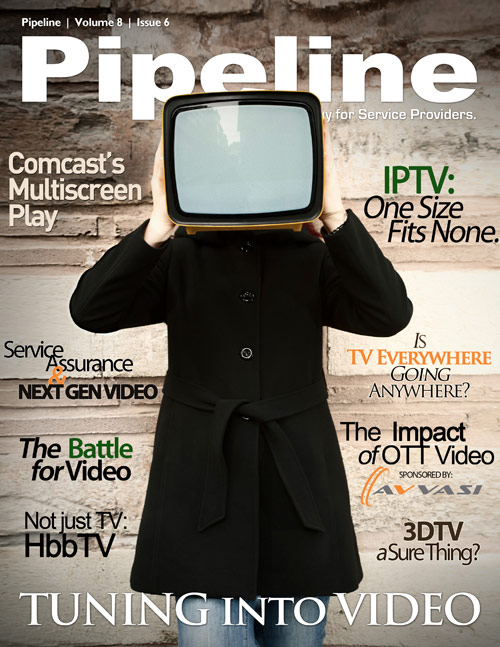Traditional IP networks (without an end-to-end QoS architecture) provide best-effort service over a common, shared infrastructure. Any link or node in the network can experience congestion. The primary mitigation strategy is to drop packets reactively. Reliable networking protocols such as HTTP Live Streaming account for this and have built-in congestion avoidance algorithms and retransmission mechanisms, however these protocols are limited to only reacting to congestion and are not pro-active. More importantly, they cannot identify subscribers or content providers willing to pay a premium for higher quality.
Wireless networks pose additional problems due to radio transmission issues. This leads to increased latency and packet loss. In TCP-based delivery, this manifests itself as sender-side timeouts and retransmissions. As a result, the user is frustrated watching an hourglass instead of steaming video.
With so much for mobile service providers to consider when investigating how they can measure and evaluate the QoE their customers receive, it is no wonder that so many of them get lost in a multitude of network Key Performance Indicators (KPIs) that may not be relevant to the customers' perceived experience.
Avvasi is helping service providers address the video traffic growth phenomenon. Avvasi technology enables service providers to see in real time what their subscribers are seeing. For example, if a subscriber gets an hourglass on a stalled video playback, Avvasi’s solution will report the issue to the service provider operations center in real time, enabling the service provider to take action.
Traditional methods of measuring video QoE are not suitable for OTT video since they are too computationally intensive for real-time monitoring of unicast streaming services, and do not address the variety of streaming protocols and devices in the OTT ecosystem. Avvasi’s patent pending Q-VUE system supports all major OTT protocols and enables real-time monitoring of video sessions and associated video quality over an entire network, including the largest tier-1 broadband and mobile networks, and the technology.
For a more detailed explanation of how video QoE is measured and the video properties that affect QoE, visit www.avvasi.com or download our whitepaper Measuring Quality of Experience for Over-the-Top Video Services
Avvasi has developed Q-VUE, a unique OTT video analytics product that supports all major OTT protocols, including progressive download, HTTP chunked download, RTMP, HTTP Live Streaming and Silverlight Smooth Streaming, amongst others. Q-VUE produces two different scores – Presentation Quality Score (PQS) and Delivery Quality Score (DQS). PQS measures the quality level of a media session, taking into account display device and ignoring the impact on the network. For each media session relevant audio, video and device KPIs are extracted. These parameters are incorporated into a no-reference bit-stream model of satisfaction with the audio-visual quality of the media session. DQS measures the success of the network in streaming delivery, reflecting the impact of network delivery on QoE while ignoring the source quality. Simply reporting on the overall number of stalls or stall frequency per playback minute is insufficient to provide a reliable representation of QoE. The model must be tested with, and correlated to, numerous artifact scenarios, using a representative sample of viewers, to arrive at an accurate Delivery Quality Score. Real-time media sessions are recorded, monitored and inspected. Avvasi’s approach applies best practices from professional video broadcast standards, including the use of subjective testing methods to evaluate viewer satisfaction with the video session, and is based on a MOS score of 1-5. These results are then correlated to the subscriber model, which allows for automatic and objective measurement of the subjective quality. We believe that understanding and measuring QoE is critical because, simply put, QoE leads to future service revenue.








